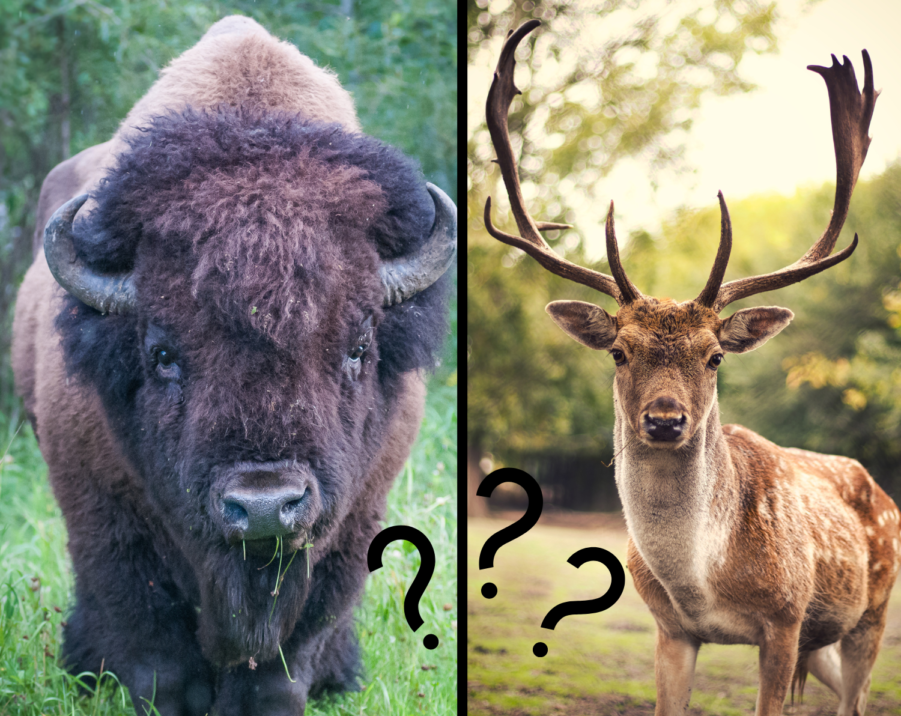Large mammals are some of the most exciting wildlife to watch in nature. Not only are they often somewhat shy and elusive, but they often display some fantastic adaptations. Whether you’re out for a stroll a neighborhood park in England, or India or on safari in the tropics, big furry beasts are super exciting. Among the most impressive characteristics of some large mammals is their headgear. Deer, antelopes, oxen, bison, and all manner of other hoofed mammals come sporting impressive horns. Or are they antlers? As it turns out, there is a lot more to these fascinating body parts than meets the eye. In this Naturalist Answers post, let’s discuss: What’s the difference between horns vs. antlers?
What kind of animals have horns vs. antlers?
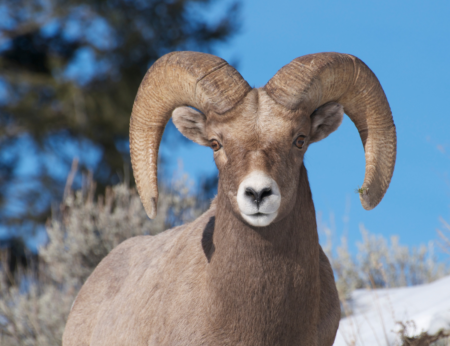
A good place to start might be the type of animal on which you’re spotting this impressive headgear. Although this isn’t always the case in nature, most of the animals with different kinds of head-weaponry are somewhat related to one another. One one hand, you’ve got the cervidae, or deer family, who are the only ones with antlers. Opposite them is the bovidae family which includes buffaloes, cows, bison, yaks, goats, and antelopes. In other words, almost everything else!
Curious what I mean by “family”? Check out my guide to wildlife taxonomy!
Some common members of the cervidae include:
- White-tailed deer (Odocoileus virginianus) in North America
- Muntjacs (Muntiacus) in South Asia
- European (Alces alces) and American moose (Alces americanus) in North America & Europe
- Reindeer or caribou (Rangifer tarandus) in the arctic
- Fallow deer (Dama sp.) in Europe and the middle east
- Elk or wapiti (Cervus sp.) in North America and East Asia
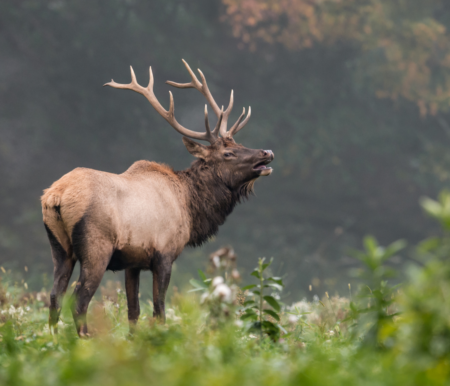
All of the above have antlers of some kind. By contrast, the bovidae are species like:
- Water buffalo (Bubalis bubalis) in Asia and Africa
- Nearly 100 African antelopes, like Wildebeest (Connochaetes sp.), sable antelope (Hippotragus niger) , gazelles (Gazella sp.), klipspringer (Oreotragus oreotragus) and gerenuk (Litocranius walleri)
- Mouflon (Ovis gmelini) in the Middle East
- Chamois (Rupicapra rupicapra) in Europe
- Mountain goats (Oreamnos americanus) and Bighorn sheep (Ovis canadensis) in North America
- American Bison (Bison bison) in North America
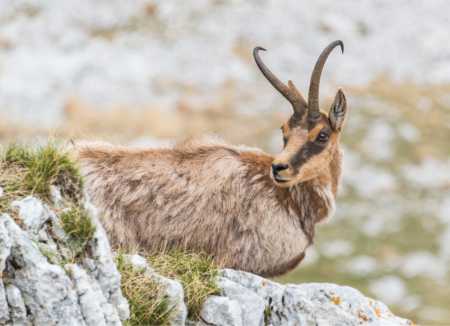
His or hers?
Within species, there are also important differences in who is carrying the headgear. Only male members of the cervidae have antlers, with one exception. Caribou or reindeer females also have antlers, which as in many species with horns, serve for defending young from predators. By contrast, both males and females of many horned species in the bovidae have some form of horns. These are typically larger and more impressive on males, but females will still have them.
Single-use or Reusable?
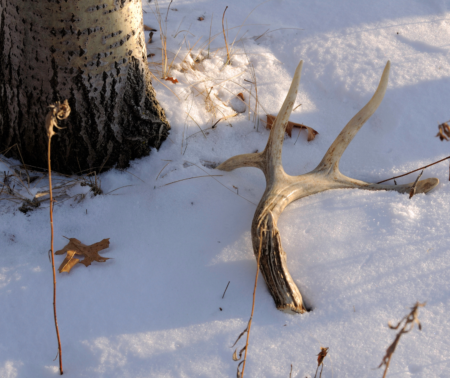
One of the most major differences between horns and antlers is the amount of time they stay on the animal. To be specific: horns grow throughout an animal’s lifetime, while antlers grow and then are discarded each year. This means that the size of an animal’s horns, especially on a male, can tell you about the animal’s age. By contrast, the size or presence of antlers doesn’t always tell you whether a deer is male, or how old it is. However, older and healthier individuals within the cervidae are capable of growing larger antlers throughout the year.
For mammals in the deer family, antlers are a matter of timing with nature’s rhythms. Males develop antlers throughout the Spring and Summer to use them during the rut, or breeding season. This typically takes place in the Fall, and males “drop” them for the Winter. It must really be a relief!
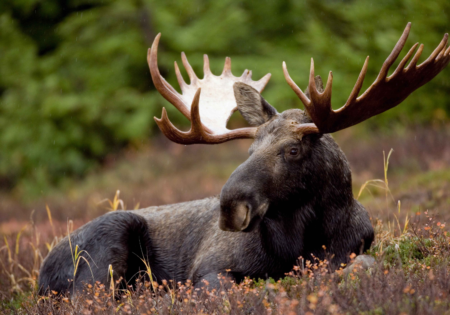
If this all sounds like a big waste of energy and resources, you’re absolutely right. Males grow antlers to fight with one another, but also to show off. Antlers are a form of sexual signaling in members of the deer family, and are a way for males to show off how healthy they are. If they can eat enough and be healthy enough to “afford” growing huge, impressive horns without starving, then they must be excellent mates and in great shape. In addition to their function as weapons for dueling other males, you can think of antlers like an expensive watch, showing off resources to woo potential mates.
What are horns and antlers made out of?
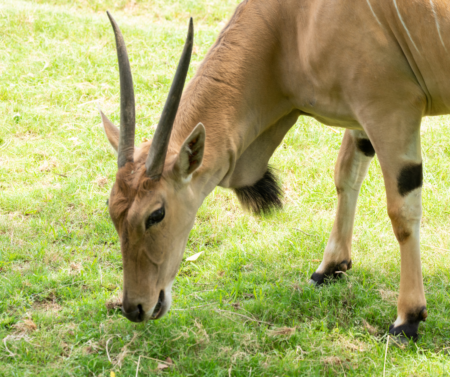
Moving on, let’s think about material. When it comes to animal’s body parts, surprisingly similar-looking structures can come from totally different parts of their bodies. This is somewhat true for horns vs. antlers.
Horns consist of a bony outgrowth from the skull which forms their central core. Around this core, the animal secretes a coating of a protein called keratin from its skin which surrounds and grows with the horn. Keratin is one of the major biological components making up our nails and hair, but forms a hard outer coating for horns. This kind of growth often produces a spiral ridging pattern within the greater shape of the horn. Horns grow from the base, just like our hair and fingernails.
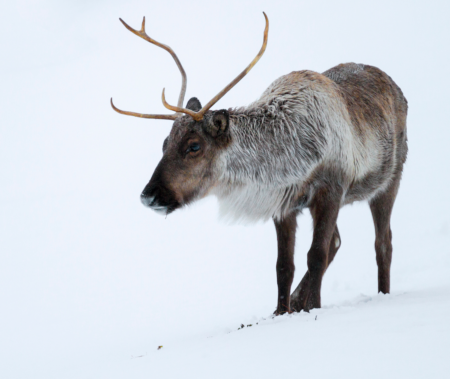
Antlers are entirely made of bone, which grows from a special disc-shaped area of the skull called the pedicle. The bone that makes up the antler grows out of the pedicle with impressive speed, and is the fastest growing bone among all mammals. Think about it—a moose’s antlers can be five feet across and weigh up to 30 pounds, and they grow all that in less than a year! Being made only of bone, antlers grow by the elongation of soft cartilaginous tissue that calcifies and hardens as it matures. Unlike bones, antlers grow from the tip, and often form branching patterns.
Are there other kinds of horns out there?

Looking over my list of common animals with antlers and horns, you might be wondering about a few that haven’t come up. For example, where do rhinos fall in, or elephants with their tusks? As it turns out, like everything else in nature, there are plenty of exceptions and other strange cases out there. For example, the pronghorn antelope (Antilocapra americana), North America’s fastest animal, has horns that it sort of sheds. This weird, ancient mammal has horns with a keratinous sheath, but it sheds that sheath every year instead of constantly growing it throughout its lifetime.

What about rhinoceros horns? Fascinatingly, rhinoceros horns are made only of keratin, that prolific fingernail protein, and contain no bone at all. By contrast, elephant tusks, as well as the tusks of animals like boars and narwhals, are actually giant, modified teeth. This means they are composed of a unique matrix of proteins, calcium, and other minerals that is super hard and has little in common with horns or antlers.
Thanks for reading about horns vs. antlers!
If you enjoyed this post, please share it on Social Media or support the blog by following on Instagram or Facebook. If you’ve got your own burning nature questions you’d like to see answered on Gulo in Nature, shoot us a message using the Contact page!

